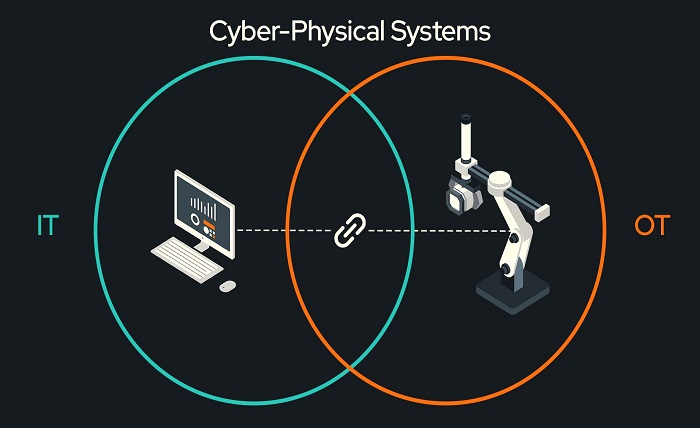Table of Contents
- Introduction to Cyber-Physical Systems (CPS)
- Enhancing Efficiency and Productivity
- Improving Safety and Reliability
- Healthcare Innovations through CPS
- Transportation Advances with CPS
- Smart Grids and Energy Management
- Challenges and Considerations
Introduction to Cyber-Physical Systems (CPS)
In today’s interconnected world, a cyber-physical system (CPS) stands at the forefront of technological advancements across various sectors. These systems are designed to integrate computational algorithms with physical components, enabling seamless interaction between the digital and real-world environments. As industries become increasingly digitized, the role of CPS becomes more critical. These systems are revolutionizing industries’ operations by offering unprecedented efficiency, safety, and innovation. The integration of CPS into various sectors allows for a harmonious blend of digital data processing and real-world physical actions, creating dynamic and adaptive systems that can significantly enhance operational capabilities.
By utilizing cutting-edge sensors, actuators, and communication networks, CPS connects the digital and physical realms, allowing for immediate monitoring and management that can revolutionize operations in businesses and industries.
Enhancing Efficiency and Productivity
CPS significantly boosts efficiency and productivity by automating processes, monitoring performance, and providing real-time data analysis. This leads to faster decision-making and reduced operational costs. CPS can enhance production lines, decrease waste, and forecast maintenance requirements in manufacturing, guaranteeing minimal downtime and maximizing productivity. Utilizing sensors and IoT devices, CPS can oversee all stages of production, offering essential insights to aid managers in decision-making. This degree of automation boosts efficiency and minimizes human mistakes, resulting in improved product quality and streamlined operations. Moreover, CPS helps companies promptly adapt to fluctuations in demand, creating a production environment that is more flexible and responsive.
Improving Safety and Reliability
Safety is paramount in industries like healthcare, transportation, and energy. CPS enhances safety and reliability by providing advanced monitoring and control mechanisms. These systems can detect anomalies, predict failures, and trigger automatic responses to prevent accidents. The Industrial Internet Consortium emphasizes the role of CPS in maintaining safety standards. CPS plays a crucial role in maintaining operational safety in industries such as nuclear power or chemical manufacturing, where the stakes are incredibly high. They enable real-time monitoring of critical parameters and provide automated control responses that can prevent catastrophic failures. Being able to anticipate failures ahead of time allows for proactive maintenance, improving the safety and reliability of complex systems.
Healthcare Innovations through CPS
The healthcare industry benefits immensely from CPS. They enable remote patient monitoring, automated diagnostics, and personalized treatment plans. By integrating Internet of Things (IoT) devices, CPS can collect and analyze patient data in real time, improving outcomes and reducing the burden on healthcare professionals.
For instance, wearable gadgets that track vital signs can notify doctors of possible problems before they become severe. This enhances patient care and enables more effective utilization of healthcare resources.
Additionally, automated diagnostic systems can analyze medical images with high accuracy, assisting doctors in making timely and accurate diagnoses. As a result, healthcare providers can offer more personalized and effective treatment plans, improving the overall quality of care.
Transportation Advances with CPS
Transportation systems are becoming more innovative and more efficient with CPS. Intelligent Transportation Systems (ITS) utilize CPS to manage traffic flow, enhance vehicle safety, and optimize public transportation networks. Self-driving cars, for example, rely on CPS to navigate and respond to their environment accurately, reducing the likelihood of human error and improving overall road safety. By integrating sensors, cameras, and advanced algorithms, these systems can make real-time decisions that enhance traffic management and reduce congestion. Public transportation networks also benefit from CPS, as they enable better scheduling, route optimization, and real-time tracking of vehicles. This results in more reliable and efficient public transportation services, making commuting more accessible and convenient for passengers. Additionally, CPS can improve public transportation safety by providing advanced monitoring of vehicle conditions and driver performance, ensuring that potential issues are addressed proactively. Furthermore, CPS can enhance the passenger experience by providing real-time information on schedules, delays, and alternative routes, allowing commuters to make more informed travel decisions.
Smart Grids and Energy Management
In the energy sector, CPS facilitates the development of smart grids, which integrate renewable energy sources and optimize energy distribution.
These systems allow for the monitoring of energy consumption in real time, which enhances efficiency and sustainability. Smart grids supported by CPS can significantly reduce energy waste, leading to more sustainable energy usage and lower consumer costs. By dynamically adjusting the supply and demand of energy, smart grids can balance load more effectively and integrate diverse energy sources, such as solar and wind power. This enhances energy efficiency and reduces the environmental impact of energy production.
Moreover, smart grids can quickly detect and isolate issues in the distribution system, reducing interruptions and enhancing the energy supply’s dependability. The monitoring features of CPS in real-time also improve demand response management, which helps utilities encourage consumers to lower or change their energy usage during peak periods. This could result in more reliable and adequate power systems, ultimately helping consumers and the environment.
Challenges and Considerations
The outlook for CPS appears bright as improvements in AI, ML, and extensive data analysis continue to boost their abilities. We anticipate more significant efficiency, safety, and innovation enhancements by implementing CPS in industries. Remaining knowledgeable and adjusting to these changes will be crucial for companies and individuals. New technologies like quantum computing and advanced robotics can drastically transform CPS, allowing for the development of even more complex and efficient systems. Looking into the future, the seamless integration of CPS into our daily lives will lead to innovation in various industries and open up new opportunities for growth and progress.
Furthermore, collaboration among academia, industry, and the government will improve CPS research and development and offer a more dynamic and innovative atmosphere. Investing in education and workforce development can ensure that future engineers and scientists are ready to lead the future of CPS. By allocating resources to education and workforce development, we can guarantee that the upcoming engineers and scientists are prepared to advance the future of CPS.
To sum up, Cyber-Physical Systems provide numerous advantages in different sectors. Their influence is undeniable, from increasing efficiency to enhancing security. The vast potential for CPS to transform our world continues to grow alongside technological advancements. As we progress, businesses, policymakers, and society must adopt the opportunities offered by CPS and tackle the related challenges proactively. By doing this, we can build a more efficient, safe, and sustainable future for everyone.



